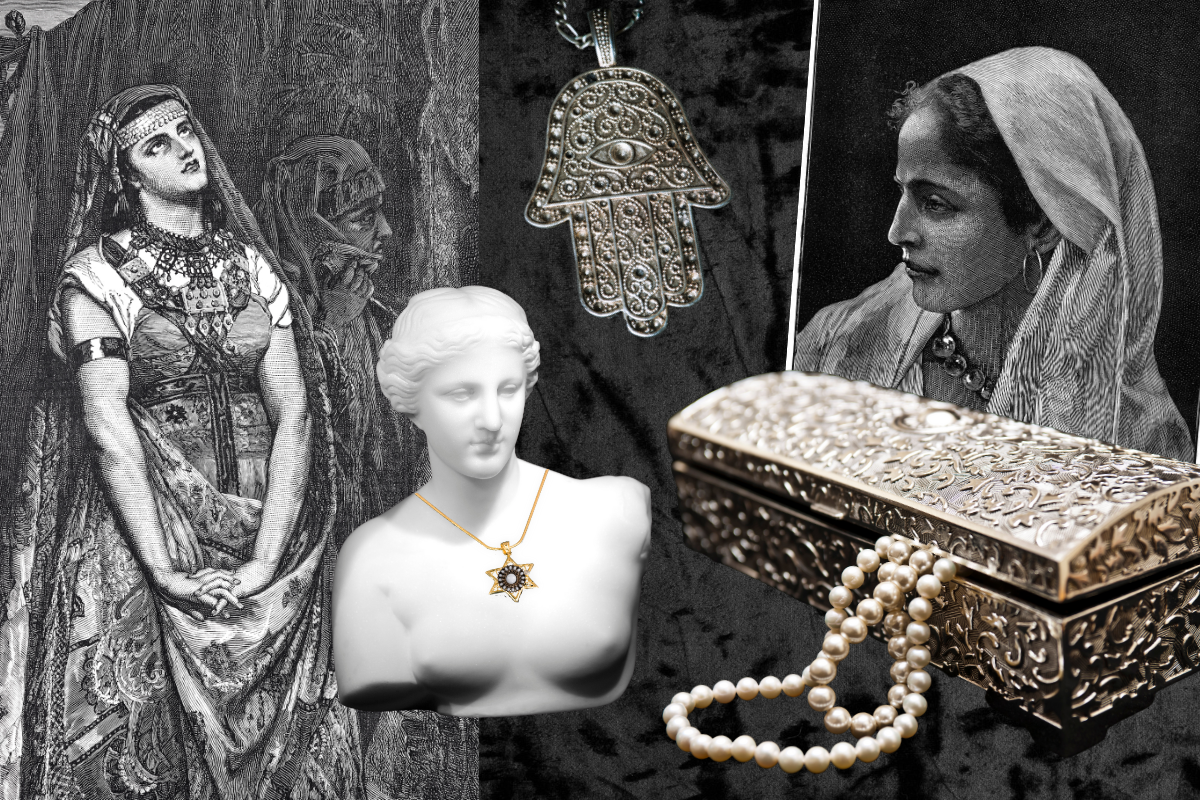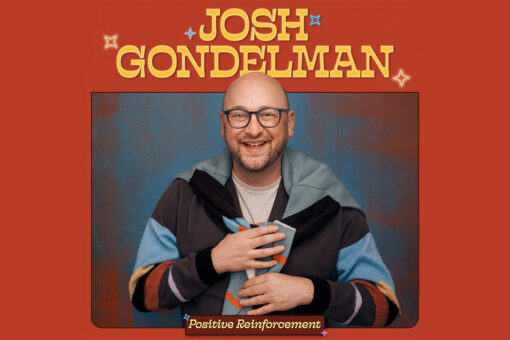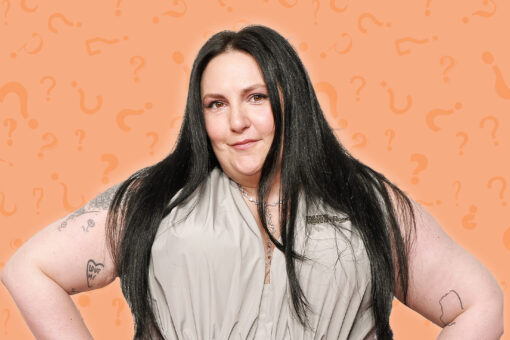I was never a child who was terribly interested in clothes. But jewelry? I loved jewelry from the get-go. In fact, when I first learned that in British English, jewelry is spelled “jewellery,” I lit up. Jew Ellery, you say? Why, that’s me!
I was introduced to my jewelry fascination by my mother and grandmother. One of my earliest memories is standing at my grandma’s bureau, eyes wide as she showed me earrings, bracelets, necklaces — and generously gifted me things I especially loved. My mother was the one who taught me about birthstones, and introduced me to jewelry designers.
The Jewish history of jewelry goes much deeper than my own family, though. In fact, it goes back to the earliest days of Judaism as we understand it. The Book of Exodus teaches us that Aaron demanded golden earrings from Israel to form the golden calf — and that he ordered men to forcibly remove the jewelry belonging to their wives and daughters, because, as some rabbis have noted, the women had refused to participate by surrendering some of the only items of value they would have owned. In this, we see how the love of jewelry, and respect for yourself and your ability to make your own choices, can be a holy thing.
For centuries, from the Middle Ages to the modern era, there was an association-turned-stereotype of Jews working in the jewelry business. There were reasons for this — in particular, a history of persecution and exile made a trade that was inherently portable, and came with its own built-in “emergency fund,” appealing.
But for Jewish women, the association with and love of jewelry, as art and ornamentation as well as a livelihood, goes far beyond the stereotypes. In fact, some great pioneers of the world of fashion, or costume, jewelry have been Jewish women. Austrian-Jewish immigrant and fashion designer Nettie Rosenstein was not only one of the first designers to popularize the iconic “little black dress” — she was also a wildly popular designer of costume jewelry (and so beloved at her job that she was persuaded to come out of retirement to design Mamie Eisenhower’s inauguration outfit).
While little is known about the early life of another Jewish woman in the world of costume jewelry, French-Jewish Lea Stein, many historians believe she spent a portion of her childhood in a concentration camp. After the war, she became a pioneer in the artistic use of plastics, and is considered the most important plastic jewelry designer of the 20th century, with a specialty in Art Deco inspired brooches and buttons.
Another historical woman in jewelry with a Jewish WWII connection, although a gentile herself, is Suzanne Belperron, a fine jewelry designer who saved her Jewish business partner, Bernard Herz, during the Nazi occupation of France. To protect Herz’s business from being seized, Belperron took it on under her name, and when the Gestapo requested their records, including Herz’s personal address book, Belperron made this impossible—by swallowing the pages one by one.
The pattern continues to this day, with Jewish women jewelry designers some of the most in-demand, and daring. Look at Dolly Cohen’s playful tooth jewelry, including custom grills for Rihanna, Drake, Madonna and more. Or, for those who don’t mix sparkles and dentistry, Eva Zuckerman’s award-winning geometric designs, or the lavish gemstone creations of Dorrit Moussaieff, Israeli jewelry designer and former First Lady of Iceland. And for jewelry not only designed by Jewish women, but which utilizes Jewish themes, Susan Alexandra’s Judaica-inspired jewelry mixes Jewish tradition with a sense of playfulness, while J. Hannah’s “modern heirlooms” include a modern, minimalist take on the Star of David.
Jewelry, Jewishness, and womanhood have sometimes been a controversial combination. Antisemitic stereotypes around greed, and the term “gold digger” have sought to turn an artistic or aesthetic love for jewelry into something ugly. But jewelry is one of the most personal ways of owning things of value — the things you wear upon your body, which have long been associated with femininity.
Jewelry is also one of the longest-lasting personal products you can own, with antique jewelry coming into fashion lately, some of which is hundreds of years old. And these old pieces can be a way of staying connected to the generations that came before us. I know when I wear jewelry that once belonged to a family member, I feel closer to them, and I know I’m not alone in that. There may have been more reasons than one that on Mount Sinai, no one wanted their favorite earrings to be made into a golden calf.



